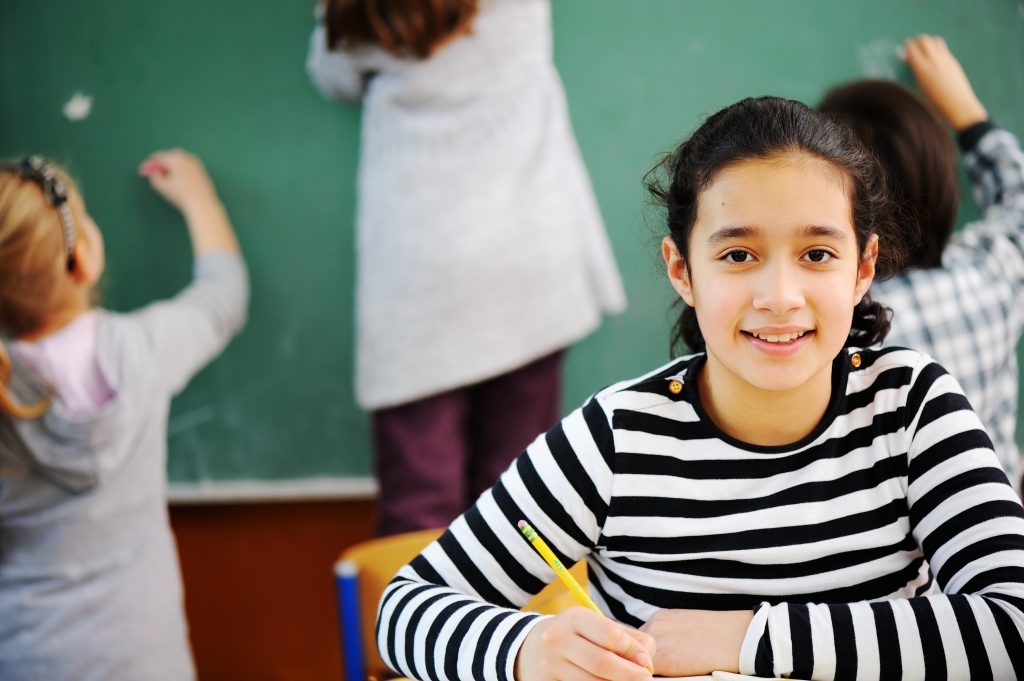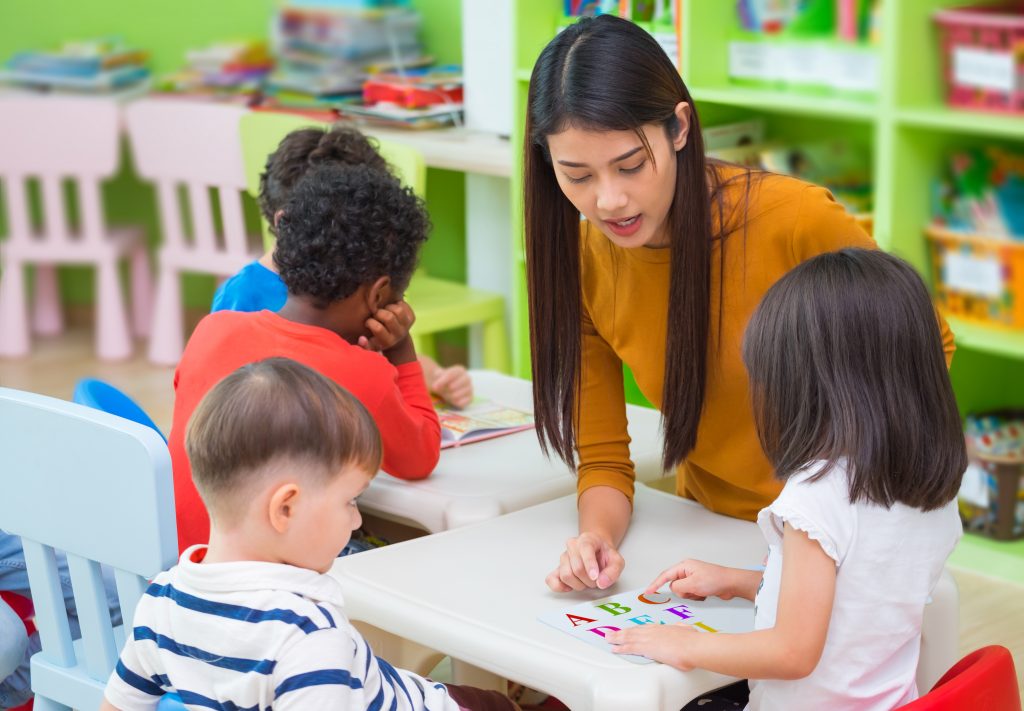The Cutting-Edge Classrooms training series is designed for teachers and principals to assist them in maximizing the activities of the classroom to promote improved achievement, retention, and engagement.
Student Artifact Analysis
Student Artifact Analysis is one of the most powerful analyses we offer. Student artifacts — the work students are asked to produce in the classroom –reveal whether the work of the classroom matches district expectations, aligns to external tests in use, and provides the kind of critical thinking skills students need for success.
Read more about Student Artifact Analysis
 This is not a training, but a stand-alone service that CMSi offers to districts so they can maximize the alignment of the written, taught, and tested curriculum and ensure that the high expectations the district has for its students are being faithfully carried out in district classrooms.
This is not a training, but a stand-alone service that CMSi offers to districts so they can maximize the alignment of the written, taught, and tested curriculum and ensure that the high expectations the district has for its students are being faithfully carried out in district classrooms.
Districts collect a large sample of their own student artifacts and CMSi provides a thorough written analysis that includes:
- Cognitive demand: how complex is the thinking required to complete the work?
- Cognitive engagement: do artifacts utilize contexts which promote engagement and retention of material? Do they match the way mastery is demonstrated on external tests like AP exams or ACT/SAT?
- Content: are there gaps? Are there overlaps between grades? Does the content align with curricular objectives?
- Average grade level: does the work students are asked to do fall on, above or below its purported grade level?
- Equity: do the artifacts reflect an inclusive curriculum that includes multiple perspectives and diverse voices? Do students have opportunities to make and express meaning of content? Do the artifacts require critical thinking and problem solving? Are there differences in artifacts between campuses or student sub-groups?
No improvement plan in the world will work if the changes don't impact what's happening in classrooms. Schedule your artifact analysis to find out what's happening on your front line.
Cognitively Complex Instruction
Instructional rigor in the classroom benefits students across the spectrum, producing flexible, critical thinkers who are engaged in the activities they are asked to do. This one- or two-day training for teachers offers a view of instruction with the aim of increasing student engagement and enhancing student cognition, and provides practical, hands-on experience both evaluating and creating activities to increase rigor in their own classrooms.
Read more about Cognitively Complex Instruction
 Research demonstrates that giving children a curriculum that is both cognitively engaging and cognitively rigorous produces improved performance. This holds true for both high and low-achieving students. Unfortunately, low-achieving students are sometimes the recipients of the least cognitively challenging and engaging activities in the interest of ensuring that they “get the basics” before the high stakes test. This one- or two-day training provides:
Research demonstrates that giving children a curriculum that is both cognitively engaging and cognitively rigorous produces improved performance. This holds true for both high and low-achieving students. Unfortunately, low-achieving students are sometimes the recipients of the least cognitively challenging and engaging activities in the interest of ensuring that they “get the basics” before the high stakes test. This one- or two-day training provides:
- An overview of the most recent and relevant research surrounding engagement and rigor;
- Extensive work with Bloom’s Revised Taxonomy to accurately identify and tailor the cognitive levels of activities;
- Information about the major types of contexts of activities – how mastery will be demonstrated – and an understanding of how context increases or decreases engagement for students;
- Hands-on example activities in a variety of content areas that will enable teachers to practically apply context information and see the many pedagogical opportunities hands-on, engaging activities can produce;
- An understanding of the importance of writing in adding both intrinsic engagement and cognitive rigor to activities;
- Information on how rubrics can help clarify context and cognitive demand and assist students in demonstrating mastery;
- Opportunity to work on their own activities with others in their content area to increase engagement and rigor.
Resource Alignment and Examining Student Work
In this one- or two-day hands-on seminar, participants will examine student work artifacts – the activities teachers give to students in the classroom — and calibrate those artifacts with state standards and tested objectives. Participants will be given over a dozen artifacts of materials used with students to analyze and calibrate, and the calibration process itself provides educators with feedback regarding the grade level of student work.
Read more about Resource Alignment and Examining Student Work
 Participants will also examine resources used in the classroom to determine if they are aligned to district curriculum and to external assessments such as PARCC, Smarter Balanced, or STARR. Part of the training enables teachers and principals to modify existing resources to address student needs and to allow for better alignment to the contexts and cognitive types students will encounter on external exams.
Participants will also examine resources used in the classroom to determine if they are aligned to district curriculum and to external assessments such as PARCC, Smarter Balanced, or STARR. Part of the training enables teachers and principals to modify existing resources to address student needs and to allow for better alignment to the contexts and cognitive types students will encounter on external exams.
The seminar has been designed for school-based administrators and teacher participants, as well as for those who coach or mentor principals. The second day of the seminar is for participants to analyze any proposed student work they have collected in their own school or district, and the teacher protocol for examining student artifacts will also be discussed.
Train-the-Trainer: This seminar, as one of the Cutting-Edge Classroom series for improving student achievement, offers an additional half-day of training for participants to acquire licensure to train others in-district. This additional seminar includes a trainer’s kit.
ELL/Dual Language: Effective Strategies for Success
Districts are being asked to serve more and more diverse populations, which creates challenges for teachers as they seek to be culturally sensitive while promoting success among their students. This one-day training provides strategies and best-practices for teachers and principals to ensure ELL and bilingual students are successful both in classroom curriculum and high-stakes tests in use.
Read more about ELL/Dual Language
 The number of students whose primary language is not English has steadily risen over the last few decades in school districts across the country. These students pose a special challenge to teachers and administrators, especially in the “no excuses” culture created by No Child Left Behind Legislation. Weak English vocabulary or literacy skills can translate into poor test performance, and strategies not specifically designed to meet the special needs of non-English speakers can actually hinder the ELL student’s learning.
The number of students whose primary language is not English has steadily risen over the last few decades in school districts across the country. These students pose a special challenge to teachers and administrators, especially in the “no excuses” culture created by No Child Left Behind Legislation. Weak English vocabulary or literacy skills can translate into poor test performance, and strategies not specifically designed to meet the special needs of non-English speakers can actually hinder the ELL student’s learning.
This one-day seminar is designed to equip teachers and administrators with those strategies and instructional principles proven successful with English language learners. Not only will the strategies be modeled, but teachers will also be provided with opportunities to practice them in a supportive, collegial setting. This seminar is for teachers of all grade levels and content areas; the strategies presented in this training are for districts with ELL, bilingual, or partial immersion programs; and are based on the philosophy that bilingualism is a strength in any classroom at any age.
The strategies include, but are not limited to:
- Methods for ensuring student comprehension of new concepts and knowledge without translation
- Developing assignments that support ELL students' ability to complete them without compromising the challenge level
- Ways to diagnose a students' linguistic needs to facilitate greater comprehension of content
- Methods for challenging ELL students at just the right level so curriculum is neither "dumbed down" nor overwhelmingly difficult.
Train-the-Trainer: This seminar, as one of the Cutting-Edge Classroom series for improving student achievement, offers an additional half-day of training for participants to acquire licensure to train others in-district. This additional seminar includes a trainer’s kit.
Gifted and Talented Students: Rigor, Engagement and Effective Differentiation
A hands-on, interactive training that takes teachers from the theory of gifted education, including the major characteristics of giftedness and how they can be misinterpreted, to the assessment of activities for engagement and cognitive rigor, and the application of these concepts in their classrooms. Teachers will participate in models of engaging, rigorous activities that they can use in their own lesson planning and will understand how to differentiate activities for students to more effectively meet their needs.
Read more about Gifted and Talented Students
 Three modules, intended to be provided in sequence over three days, but may be offered in a variety of time configurations: three consecutive days or three separate days, or even half days or a combination of the two.
Three modules, intended to be provided in sequence over three days, but may be offered in a variety of time configurations: three consecutive days or three separate days, or even half days or a combination of the two.
Module I: Theory base and modeling of engagement and rigor
Module I focuses on an overview of the research concerning giftedness, cognitive complexity, and effective student engagement while engaging participants in activities that model the same. This module is critical in helping teachers see the difference between being high achieving and giftedness, and the unique socio-emotional needs gifted children have. Participants also learn to recognize cognitive complexity and distinguish it from engagement, and they will take part in activities that are designed to model both. The objectives include involving participants in:
- A review of the research on giftedness, the socio-emotional needs of gifted children, cognitive complexity, and engagement, and discussion/reflection on each;
- Reviewing research on the importance of writing across the curriculum as a means of achieving both cognitive demand and engagement.
- Hands-on activities to assist teachers in understanding and applying the concepts of engagement and rigor from the inside out;
- Models of well-designed activities that are cognitively challenging;
- Models of the process for assuring effective student engagement; and
- Models of activities designed to support socio-emotional needs.
Module I concludes with an assignment for participants to complete before Module II. This assignment involves planning and implementing at least one lesson in their classroom that is both cognitively complex and engaging.
Module II: Analyzing lesson activities and instructional planning
In Module II, the focus is on implementing the insights and concepts gained from Module I. Participants will engage in analyzing the cognitive demand and engagement of an activity and will design modifications to maximize each. Participants also review samples of student work and activities from a variety of sources, including samples of activities from their own and their colleagues’ classrooms, to determine their cognitive complexity, engagement, and suitability for certain types of giftedness and to improve them. The emphasis is on increasing the level of student engagement and cognitive demand in the classroom setting every day, for every student, in a way that is responsive to individual student needs and interests. The objectives for participants include:
- Evaluating the cognitive demand (using Bloom’s Revised Taxonomy) and engagement of any activity, as well as its suitability for gifted students;
- Opportunities to analyze poorly designed activities and compare and contrast them with models of effective activities;
- Steps to follow to maximize the cognitive demand of almost any learning activity (and to differentiate both the learning process and learning product);
- The process of revising activities to improve their cognitive demand and engagement.
After Module II, participants will be given an assignment for application in their classroom, designed to help them practice their new learning and reflect on it.
Module III: How to differentiate instruction effectively
In this module, participants will build on the learnings from prior modules, but with an emphasis on delivering selected activities to different groups of students, based on their academic needs, type of giftedness and learning styles. In this module, participants will focus on planning lessons using flexible student groupings, to facilitate the effective differentiation of content (delivering objectives to groups of students at the appropriate level). They will also focus on building in flexibility of choice into activities to facilitate differentiation of process (how students practice the content) and product (how students demonstrate their learning). Differentiation is absolutely essential to provide effective instruction to gifted students that are in regular classrooms, either alone or in clusters, even if they are in a pull-out program. Gifted students’ needs must be met all the time, not just during a pull-out program.
The main objectives for participants during this module include:
- Reviewing the research on flexible learning arrangements and cooperative approaches;
- Structuring the classroom to facilitate small group instruction;
- Planning lessons with specific, different objectives for different groups of students;
- Designing activities with flexibility and choice to meet students’ learning styles and allow for personal preferences (for relevance).
- Discussing the frequency with which activities and lessons can or should be differentiated;
- Setting goals for personal application of the learning.
After Module III, participants will again be given an assignment for application in their classroom and a reflection on their learning.
Flexible Student Grouping and Differentiation
Differentiation is essential to providing effective instruction to students with varying levels of content mastery. After a brief overview of the research on flexible learning arrangements and cooperative approaches, participants will learn how to structure the classroom to better facilitate small group instruction.
Read more about Flexible Student Grouping and Differentiation
 Participants will also learn how to plan lessons with specific, different objectives for different groups of students and how to design activities with flexibility and choice to meet students’ learning styles and allow for greater relevance and engagement. The training will discuss how often activities and lessons can or should be differentiated and help participants set goals for personal application of the learning in their classrooms.
Participants will also learn how to plan lessons with specific, different objectives for different groups of students and how to design activities with flexibility and choice to meet students’ learning styles and allow for greater relevance and engagement. The training will discuss how often activities and lessons can or should be differentiated and help participants set goals for personal application of the learning in their classrooms.
